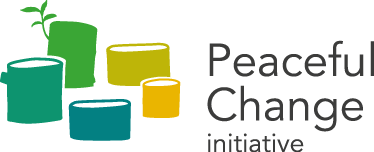Peaceful Change initiative has been providing conflict sensitivity advice for over 10 years. This advice has been given in many forms: we set up and ran a one-stop-shop conflict sensitivity support facility in Libya; we conduct conflict analysis for a range of agencies and we have hand-held organisations through organisation-wide processes to strengthen their conflict sensitivity.
Based on this experience we have identified three common conflict sensitivity problems that organisations come up against. Over the past 5 years we have been working to develop ways around these obstacles. Here we outline what these problems are and how we have tackled them.
Conflict sensitivity problem 1: analysis paralysis
The first step of conflict sensitivity is to understand the context. Most organisations do this by commissioning a conflict analysis. However, in our experience much of this analysis is not fit for purpose. It is either poorly defined, is too broad in scope, or it doesn’t actually respond to the needs of the decision makers designing or managing the project. A hundred pages of analysis going into great detail about the weaponry and chain of command of various armed groups is going to be of limited use to someone designing a healthcare programme in three towns.
It is understandable why this happens. Conflict analysis is an expert task and many analysts do not have direct experience of project implementation. But to be useful, conflict analysis needs to answer the questions which can inform the conflict sensitivity of programming and present that information in a way that is accessible and not overwhelming to aid decision makers. We explain more about how this can be done in this podcast, and in this article.
Conflict sensitivity problem 2: being able to pinpoint exactly how a project interacts with the conflict
The second step for conflict sensitivity is identifying the interaction between the conflict context and your intervention. Most organisations find it hard to take a conflict analysis and, from this, pinpoint specific ways in which their work has the potential to exacerbate or improve the conflict they are working in.
To address this problem, we have developed a typology of conflict sensitivity interactions, which we use as a reference for thinking about the potential conflict sensitivity implications of programming. It’s a great starting point for discussion about the myriad ways a project or programme can harm or improve a volatile situation. We pair this typology with a tool which we call a Conflict Sensitivity Interactions Matrix. Put simply, this is a format for documenting interactions, your mitigation strategies and how you will monitor changes through the project lifetime.
Conflict sensitivity problem 3: when there is no right answer
Once upon a time, PCi staff facilitated a conflict sensitivity workshop for governments providing humanitarian assistance in Syria. One participant reflected that his conflict analysis was telling him that giving aid to besieged areas was likely to do harm by enabling the Syrian Government to focus its resources on the war and by normalising siege tactics. At the same time, not providing the assistance risked people starving to death or dying of preventable diseases. Here the idea that our conflict analysis and conflict sensitivity tools can lead us to a choice in which we ‘do no harm’ is, unfortunately, a fallacy.
Following this discussion, PCi set out to develop a tool that would help with decision-making in these situations. We take a due-diligence approach and adapted our tool from a well-established ethical decision-making framework called the Doctrine of Double Effect,1 which is used to help determine whether decisions are morally permissible when those decisions may cause harm. The Conflict Sensitive Decision-Making tool consists of four questions that should be asked when undertaking any decision about assistance.
Need support with Conflict Sensitivity?
PCi provides trainings and conflict sensitivity advice to a wide range of organisations. Please get in touch if you would like support to implement conflict sensitivity in a project, programme or across your organisation.



